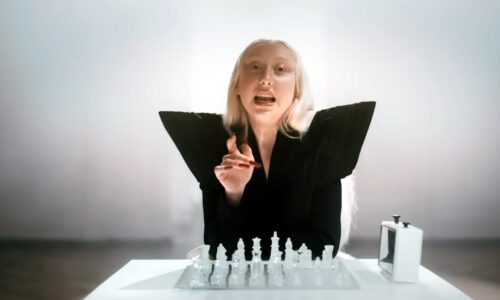We can not wait for the Eurovision Song Contest in Malmö. Therefore, we have a closer look at one of the contestants every day. Today: Poland.
Luna
Luna, the stage persona of Aleksandra Katarzyna Wielgomas, born August 28, 1999, in Warsaw, is a distinguished Polish singer, songwriter, and composer. Beginning her musical journey with violin lessons, she later attended a high school focused on law and political sciences before pursuing artes liberales at the University of Warsaw. Luna’s early career was marked by her participation in the Artos children’s choir and performances at the Grand Theatre, laying the foundation for her artistic path.
Her collaboration with the Kayax record label in 2018 through the “My Name is New” project led to her debut single “Na wzgórzach niepokoju,” propelling her into the spotlight at significant events like the Night of Museums and Pol’n’Rock Festival. 2020 saw Luna adopting her stage name and venturing into a new musical direction with Michał “Fox” Król, exploring cosmic sounds in her work, as highlighted in singles like “Serca przemokną” and “Mniej,” incorporating space sounds from NASA.
Luna’s “Zgaś” further established her presence in the Polish music scene, embodying her “cosmic pop” style influenced by the cosmos, nature, and poetry, drawing inspiration from icons like Nick Cave and Björk. In 2024, Luna was chosen to represent Poland at the Eurovision Song Contest with “The Tower,” bringing her unique sound to an international audience.
Beyond her music, Luna engages in theatre and promotes music equality, notably as an ambassador for the Equal Spotify campaign, becoming the first Polish woman to be featured on Times Square for this initiative. Her career reflects a blend of cosmic fascination, poetic expression, and advocacy for equality in the music industry.
Polish language
It is already 5 years ago that a song, partially in Polish, participated in the Eurovision Song Contest. The Polish language, a Slavic tongue, serves as Poland’s linguistic core. It intertwines with the nation’s rich history and culture. Known for its complex sounds and unique diacritical marks like ł (łaciaty), ś (śliski), and ń (koń), it challenges non-native speakers. Its pronunciation and consonant clusters are notably difficult. Its vocabulary is a tapestry of Slavic roots with layers of Latin, German, and English influences. It reflects centuries of cultural interactions. Beyond Poland’s borders, vibrant Polish-speaking communities flourish worldwide, preserving and enriching this beautiful language. Polish not only connects millions to their heritage but also to a deeply storied past and a dynamic present.

Poland in the Eurovision Song Contest
Poland debuted in the Eurovision Song Contest in 1994. With a second place for Edyta Górniak’s “To nie ja”, they secured a record. The song is still the best scoring song ever for Poland. Only two times after that, the Polish entry reached the top-10. In 2003 with Ich Troje’s “Keine Grenzen – Żadnych granic” (7th) and in 2016 with Michał Szpak’s “Color of my life” (8th). Last year, Blanka reached the final easily, but in the final itself reached a 19th place. Luna hopes to be the 4th artist reaching the top-10.

The Bookmakers
Poland is currently no. 32 in the betting odds. That means it’s gonna be a tough job for Luna to reach the final. However, things such as staging and live performance can change everything and make Poland one of the more succesful contenders.
The song
This is the song:



